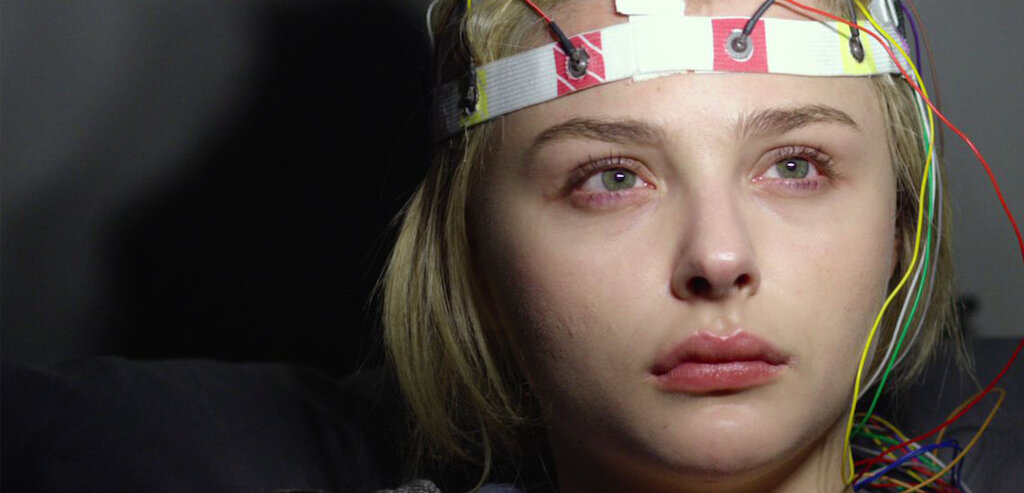Helmed by Gerard Barrett, ‘Brain on Fire’ is a medical-themed drama film that revolves around a writer, Susannah Cahalan, who suddenly starts demonstrating strange behavior and having violent outbursts. While psychiatrists struggle to diagnose her disease concretely, she is labeled as psychotic, bipolar, and even schizophrenic. As Cahalan’s condition deteriorates and her symptoms get worse, she finally comes across a neurologist who is able to understand her situation.
The 2016 film, starring Chloë Grace Moretz, Navid Negahban, and Thomas Mann, is an emotional rollercoaster showcasing Cahalan’s relentless pursuit of diagnosis and the resilience required to overcome an ailment that defies understanding. The gripping tale immerses the audience completely in its narrative and leaves one wondering if the film is based on a true story.
Brain on Fire is Based on an Autobiography
Susannah Cahalan is a real-life writer, and the film is an adaptation of her 2012 New York Times best-selling autobiography ‘Brain on Fire: My Month of Madness.’ The events depicted in the film are the raw and astonishing realities that unfolded in the writer’s own life. In 2009, Cahalan had everything she could have asked for — from a dream job with The New York Post to a loving boyfriend — but her life took an unexpected turn when one day, she began experiencing a perplexing array of symptoms. What started off as a common flu, soon turned into hallucinations, seizures, and severe cognitive and behavioral disturbances.
Over the course of the next few weeks, Cahalan’s health deteriorated rapidly, and her behavior reportedly became increasingly erratic. All this while, she was misdiagnosed with various mental illnesses. One mental health professional told her she was witnessing Alcohol Withdrawal Syndrome, another termed her condition as Bipolar Disorder, and yet another thought of her as having Schizophrenia. “It was all just so haphazardly done. All these people said, ‘Well, maybe it’s this. And here’s some medication.’ And then somebody else would say, ‘Well, maybe it’s this.’ And give me other medication. Nobody seemed to know anything,” Cahalan recalled in an interview with The Guardian.
She added, “And these are not just Joe Schmoe doctors; they are top, top doctors.” The misdiagnosis did not provide any relief or clarity regarding her condition, which continued to worsen, and she was eventually admitted to the hospital as her symptoms became life-threatening. For a period of time, Cahalan’s condition remained a mystery. Her family and medical team were baffled by her symptoms, and her life hung in the balance. After staying in the hospital for about a month, the author reached a catatonic stage, kicking and punching people around her. There was no firm diagnosis of her illness, despite spending $1 million on her hospital bill. It was at this point that Dr. Souhel Najjar took up her case.
The doctor (Navid Negahban in the film) is a real-life Syrian-American neurologist who is a specialist in the field of encephalopathy. As seen in the film, Dr. Najjar decided to perform a psychiatric test on Cahalan and asked her to sketch a clock on which she drew only the right-half side. The doctor evaluated that the right side of her brain was inflamed. “[The doctor] sat down on the bed near me. He turned to my parents and said, ‘Her brain is on fire. I’m going to do everything I can for you.’ For a moment, I seemed to come alive, he would later recall to me. I’ll always regret that I remember nothing of this pivotal scene, one of the most important moments of my life,” Cahalan told The Guardian.
Following a brain biopsy, the author was finally diagnosed with Anti-NMDA Receptor Encephalitis, a rare autoimmune disorder that causes the immune system to attack the NMDA receptors in the brain. This condition leads to a range of neurological and psychiatric symptoms, including memory loss, speech disorders, hallucinations, seizures, and loss of consciousness. With the correct diagnosis in hand, Cahalan underwent aggressive treatment, including immunotherapy and the removal of a teratoma (a type of tumor) from her body, which was believed to be triggering the immune response. Slowly, she began to show signs of improvement and was on the path to recovery.
Anti-NMDA receptor encephalitis was discovered in 2007, and Cahalan was one of the first few hundred patients diagnosed with the disease. The illness had been relatively obscure before her case came to the forefront. After recovering completely, the author took it upon herself to help more people understand the symptoms and get proper treatment. She began writing a memoir which came out in 2012. Two years later, in 2014, the rights for the film adaptation of her book were sold to Charlize Theron, who went on to co-produce the project. Cahalan’s account contributed to advancements in the understanding, diagnosis, and treatment of the rare condition. Since the launch of her memoir, thousands of people are reported to have been correctly diagnosed with the disease. In conclusion, ‘Brain on Fire’ is based on a true story as it chronicles the real struggles faced by Susannah Cahalan as she continued to be misdiagnosed while battling anti-NMDA receptor encephalitis. The cinematic portrayal of the author’s journey has helped raise awareness about the rare condition that has impacted numerous people across the globe.
Read More: Best Medical Movies on Netflix

